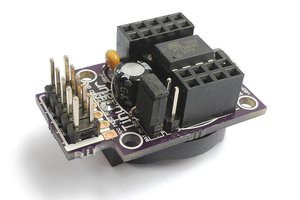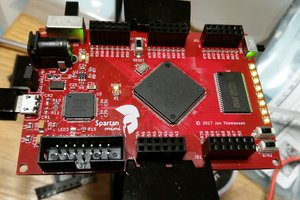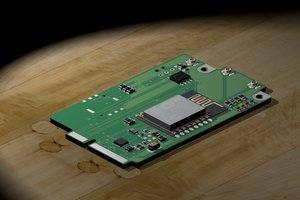This is a pretty straightforward PCB project: put a Microchip MCP23008 onto a circular 50mm board (the same size as a standard LilyPad board) with sew holes. The board, the MCP23008, and two 1KΩ pullup resistors are the only parts.
The board has two holes each for Power, Ground, SCL, and SDA, and one for every other connected pin on the chip (the eight GPIO ports, plus the Reset and Interrupt pins).
The pullup resistors can be disconnected, if necessary, by cutting the leads on their respective solder headers.
Future steps before securing a test prototype will include making the distribution of sew holes more regular; putting copper plates around the sew holes; and recreating the board in KiCad (for greater precision in the design), not necessarily in that order.
Uses
Since the last three digits the I2C address can user-set, up to 8 of these can be added to a project, providing up to 64 ports in addition to however many are left from the main board when everything else is hooked up. Since this device is wearable technology, the range of uses isn't very broad, but there is some potential.
Probably the most frequent use for this will be adding channels of LED lights. Garments that respond to various stimuli (sound, movement, proximity, etc.) or that blink in repeating patterns are a popular project, and having 64 channels of output can change such a garment from interesting to impressive.
Having additional inputs can be helpful, too. Going all the way to a maximum of 8 boards seems a bit much (though I'm sure someone will come up with something), but there may be times when more digital inputs are needed than a processor board can provide. My own project for this is a glove that works as a secret remote control; the top-end version has 14 buttons, and needs additional I/O ports for a wrist display.
 bobgreenwade
bobgreenwade
 Neven Boyanov
Neven Boyanov
 Jon Thomasson
Jon Thomasson
 Lukasz
Lukasz